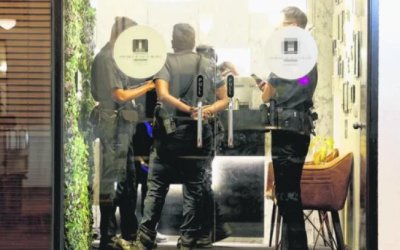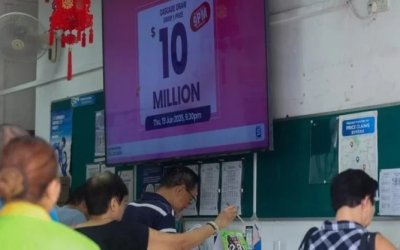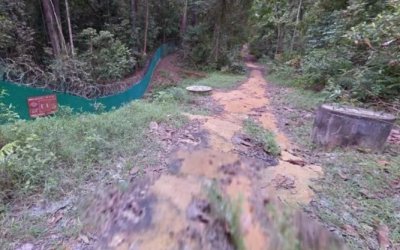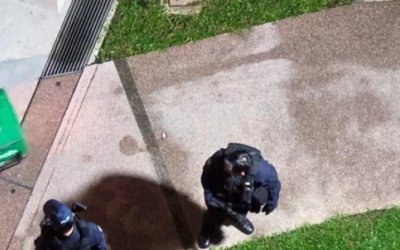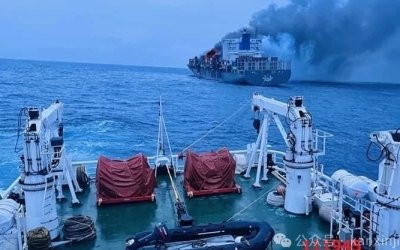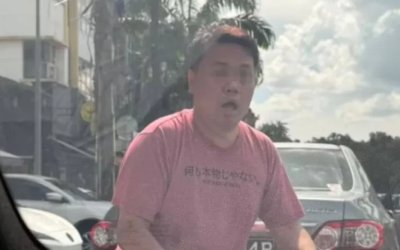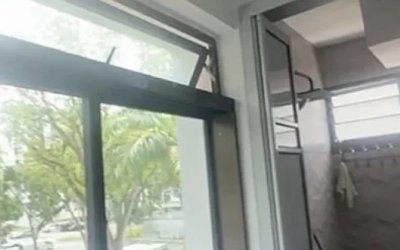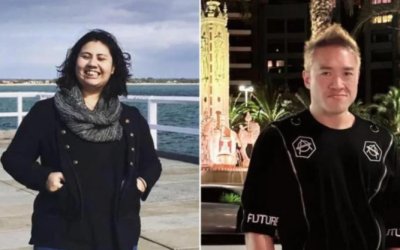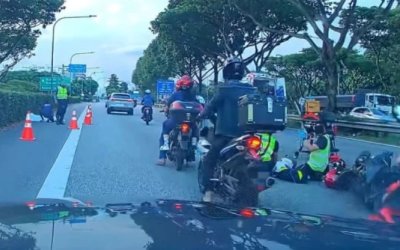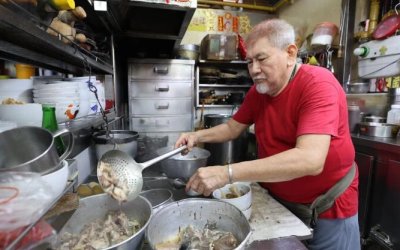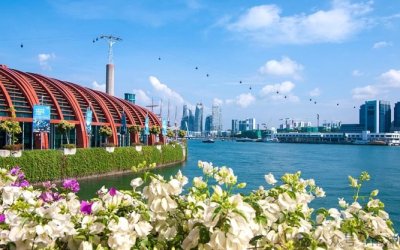But our approach has been criticised by some who are helping inmates to abuse the legal process. The Courts have said that they try and frustrate the legal process and prevent the penalties from being carried out. I will set out the broader context for the situation – show how these criticisms are without merit. I will also set out what we intend to do about those attempts to abuse our legal process.
I will cover four areas in this Statement. First, I will discuss the global and regional drug situation. Second, I will speak about the threat from the drug trade and our approach to that threat. Third, I will speak about some attempts to spread misinformation and try and undermine aspects of our drug policies. I will also show that, despite these attempts, there is strong public support for our approach and policies, including the death penalty. And fourth, I will set out our plans to further strengthen our drug control policies.
With your permission, Mr Speaker, Sir, I ask to display some slides and photos on the LED screens as I speak.
Mr Speaker: You may proceed. [Slides were shown to hon Members.]
Mr K Shanmugam: Let me begin by speaking about the global drug situation. Every region, every region in the world is being affected by drugs.
I start with Europe. European countries, first world countries, have been very hard hit. Europe's ports have been described by a major weekly as "drug hubs" and "safe terrain for narcotics". It also said that in the European Union (EU), half of all homicides and more than a quarter of illegal firearms seizures were linked to drug trafficking. So, Members can consider just how many lives have been lost.
So, let us look at some specific countries. In the Netherlands, a record of over 60,000 kilogrammes of cocaine was seized by Dutch Customs in 2023 alone. I have set out on the slides, some of the quotes from senior people in the Netherlands. In the port city of Rotterdam, children, some as young as 14 years old, are being recruited as "cocaine collectors" to get the drugs from shipping containers.
In January this year, the Mayor of Amsterdam Femke Halsema said the Netherlands risks becoming a "narco-state". The illegal drugs trade has grown "more lucrative, professional and ruthlessly violent". Think of a Mayor of a major European city saying that and what the implications are. The chief of the largest police union in the Netherlands Jan Strujis has said the country had a parallel economy controlled by crime groups, shootings and killings. A former Justice and Security Minister Grapperhaus has said that "excessive violence" against politicians, lawyers and journalists was "no longer taboo".
Sweden, considered one of the safest places in the world, has also been seriously affected by drug- and gang-related violence. Since 2013, the number of fatal shootings has more than doubled. In 2022, there were 391 shootings, 90 explosions, 101 attempted attacks with explosives. These were linked to fights between criminal gangs over drugs and arms.
The then-police chief Thornberg said and, I quote, "citizens are afraid, insecurity is increasing". Young lives in Sweden are being destroyed by this senseless violence. In 2022, 30% of suspects for gang-related violence were between 15 and 20 years old. A lawyer who represents teenage shooting victims and suspects told the BBC: children in Sweden are using their, and I quote, "own bags, not to carry books, but they carry the drug markets of Sweden on their shoulders."
Turning to Belgium, last year, in Antwerp, an 11-year-old girl was killed in a shooting in her own home. It was linked to a drug-related gang dispute. In the last decade, there have been hundreds of such incidents in Antwerp: shootings, grenade attacks, fires and bombings. Many were linked to gang-related violence trying for a piece of the cocaine trade.
The mayor of Antwerp Bart De Wever has described the situation as being a "much bigger" threat than the 2016 Brussels bombings. The Brussels bombings made headlines around the world. When terrorists attack, it becomes big news. But with drug violence, it gets ignored even though it is much bigger and a more continuous threat which affects many more people and, really, this should be taken more seriously.
Last year, the Belgian customs seized a record amount of cocaine more than the customs and border officials in all of the United States (US). Their incinerators in Belgium were not able to burn the seized drugs quickly enough and the confiscated stash has earned the nickname "cocaine-berg".
Customs officials now tell the media that they will never win the war against the cartels. So, Members can ask themselves why are officials in a first-world country saying this: that they cannot win the fight against the narcotic gangs?
In the United Kingdom (UK), the example of Barrow-in-Furness shows how drugs can seriously damage a place. In the last decade, the town has been plagued by drug use and drug-related deaths. In 2018, its opiate-related deaths were double the national average. It became known as the country’s "most infamous brown town". Last year, there was an almost 50% jump in drug offences compared to the previous year.
The situation is dismal: town buildings mostly boarded up and vandalised, broken furniture strewn on the streets, windows smashed. Businesses and residents say that they may have no choice but to leave the town if things do not change. From 2011 to 2021, the town population decreased by 2.4% while England's population increased by 6.6% over the same period.
I should have added in Belgium, the Justice Minister, my counterpart, has to live out of safe houses because the police cannot guarantee his safety.
Let us look at South America, the United Nations Office on Drugs and Crime (UNODC) said that 18 out of 21 countries are now the main sources of transit for cocaine.
Ecuador was once seen as a peaceful country. It has become wrecked with drugs and violence. From 2018 to 2022, its homicide rates increased by four times and the homicide rates are now the eighth highest in the world. There are reports of beheadings, car bombings, assassinations of police officers, children being gunned down. In one hideout used by the drug cartels, the police uncovered a collection of stuffed toys. Gangs are said to have used the toys to attract young children and then recruited them as drug pushers and handed them weapons and forced them into the drug trade.
In Mexico, murders, abductions, forced disappearances are almost daily occurrences due to turf wars between drug cartels. Since 2006, nearly 450,000 people have been killed, a significant number of these killings are believed to be linked to drugs and the drug trade.
We move to North America. In recent years, some places have chosen to decriminalise drugs. They take the position that drug use is a personal choice and it should be destigmatised and allowed under certain conditions. Others say that the problem has gotten out of control and their solution is to allow drug abuse under so-called "safe" conditions. For example, they have decriminalised personal possession of drugs below certain limits. And what are the results?
